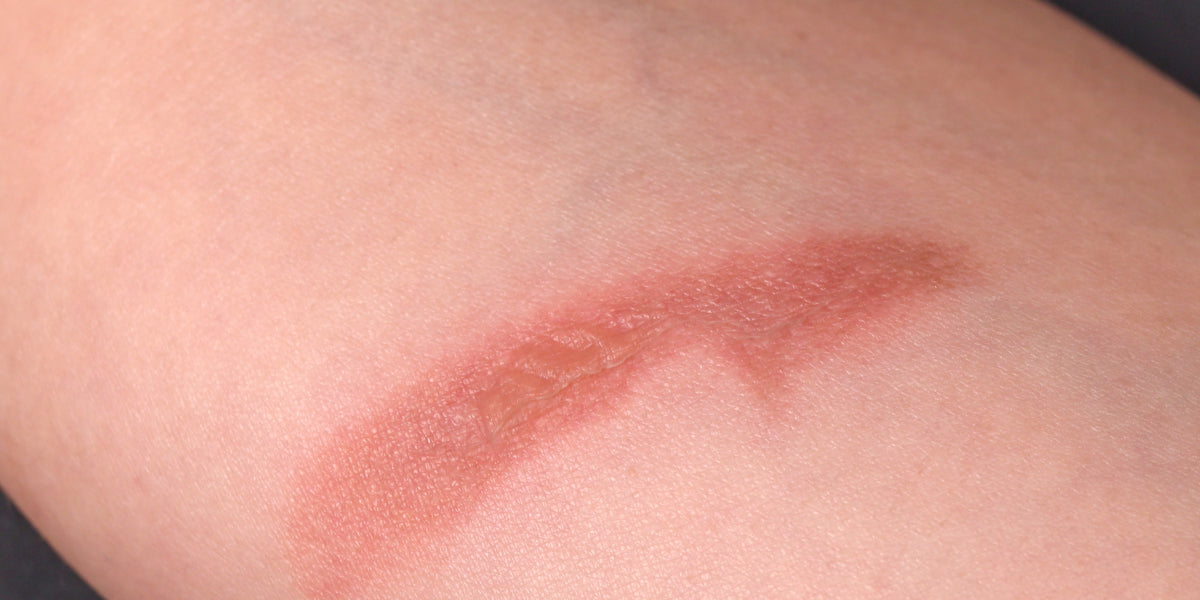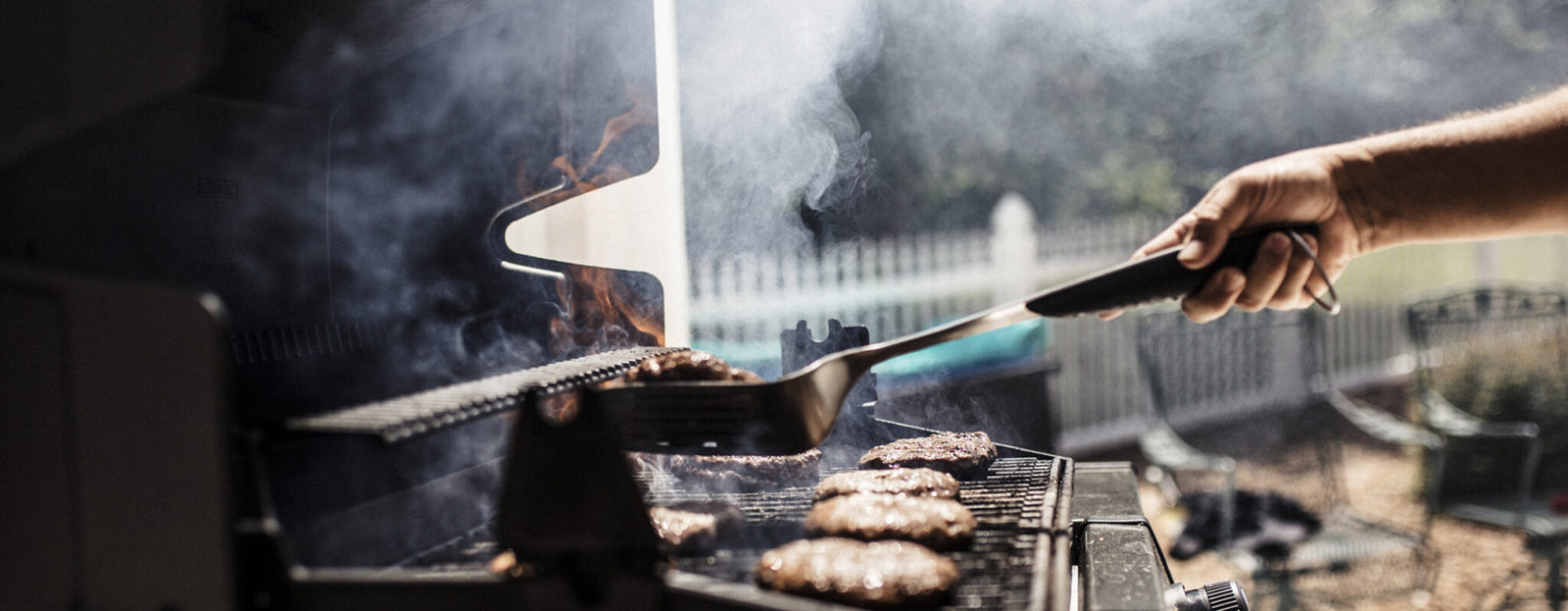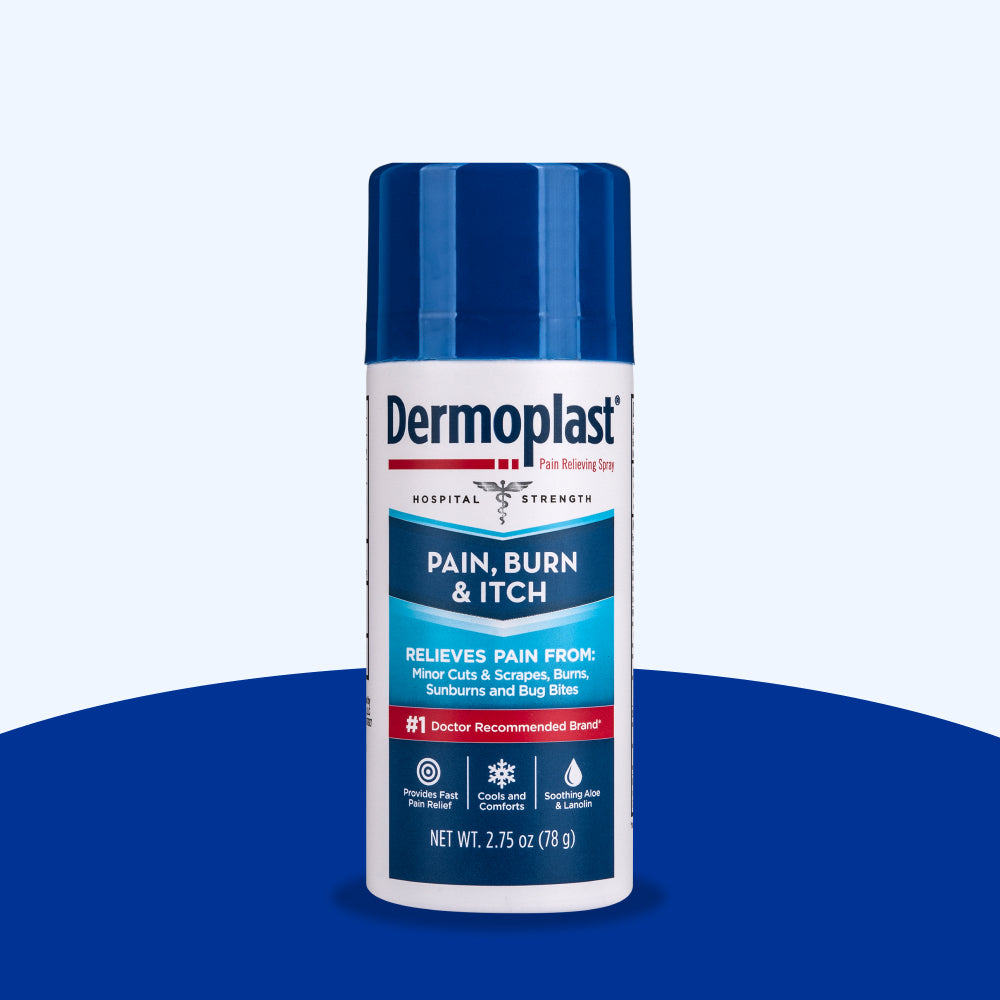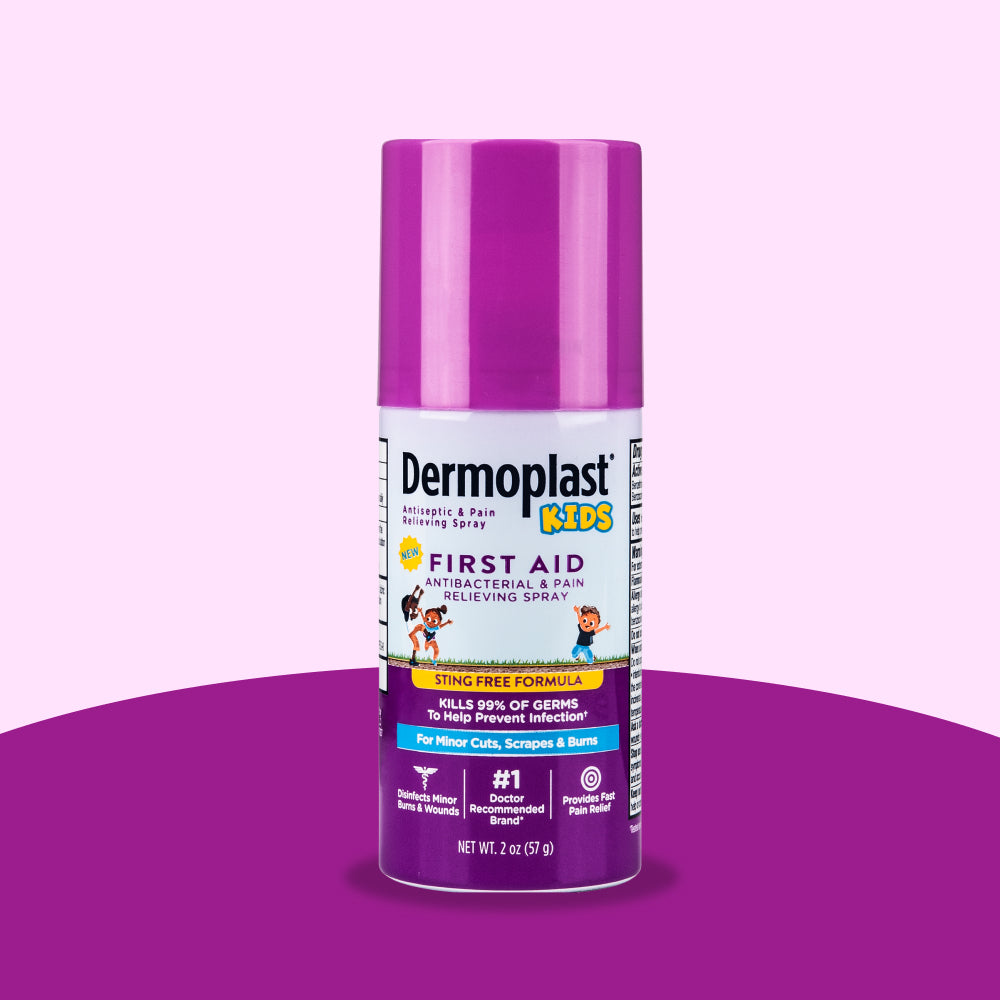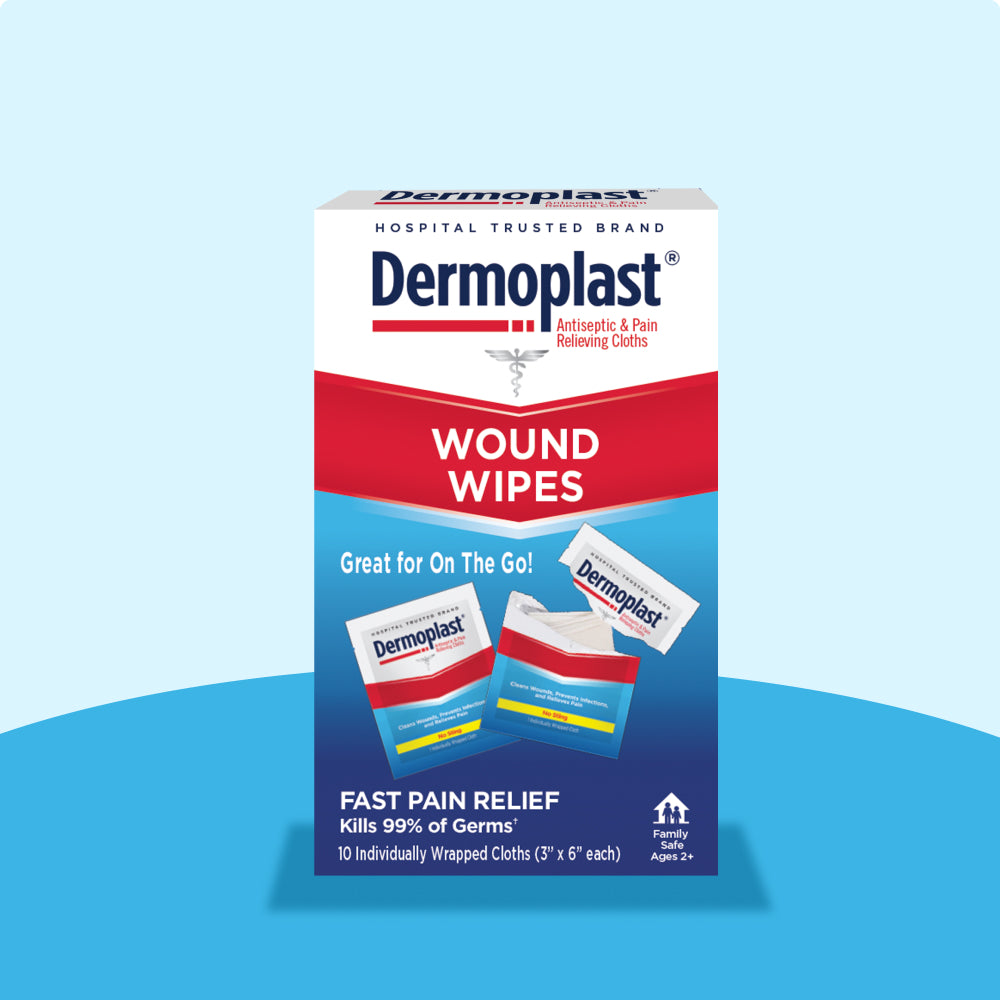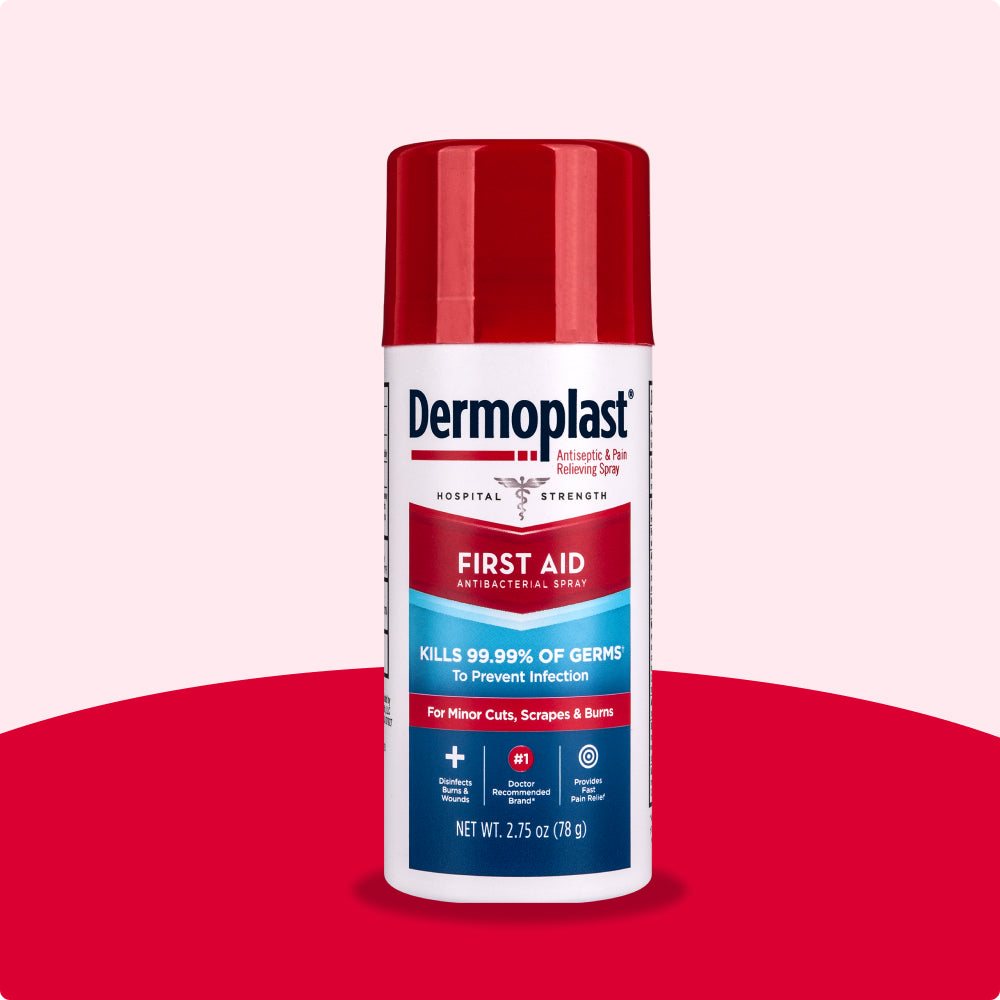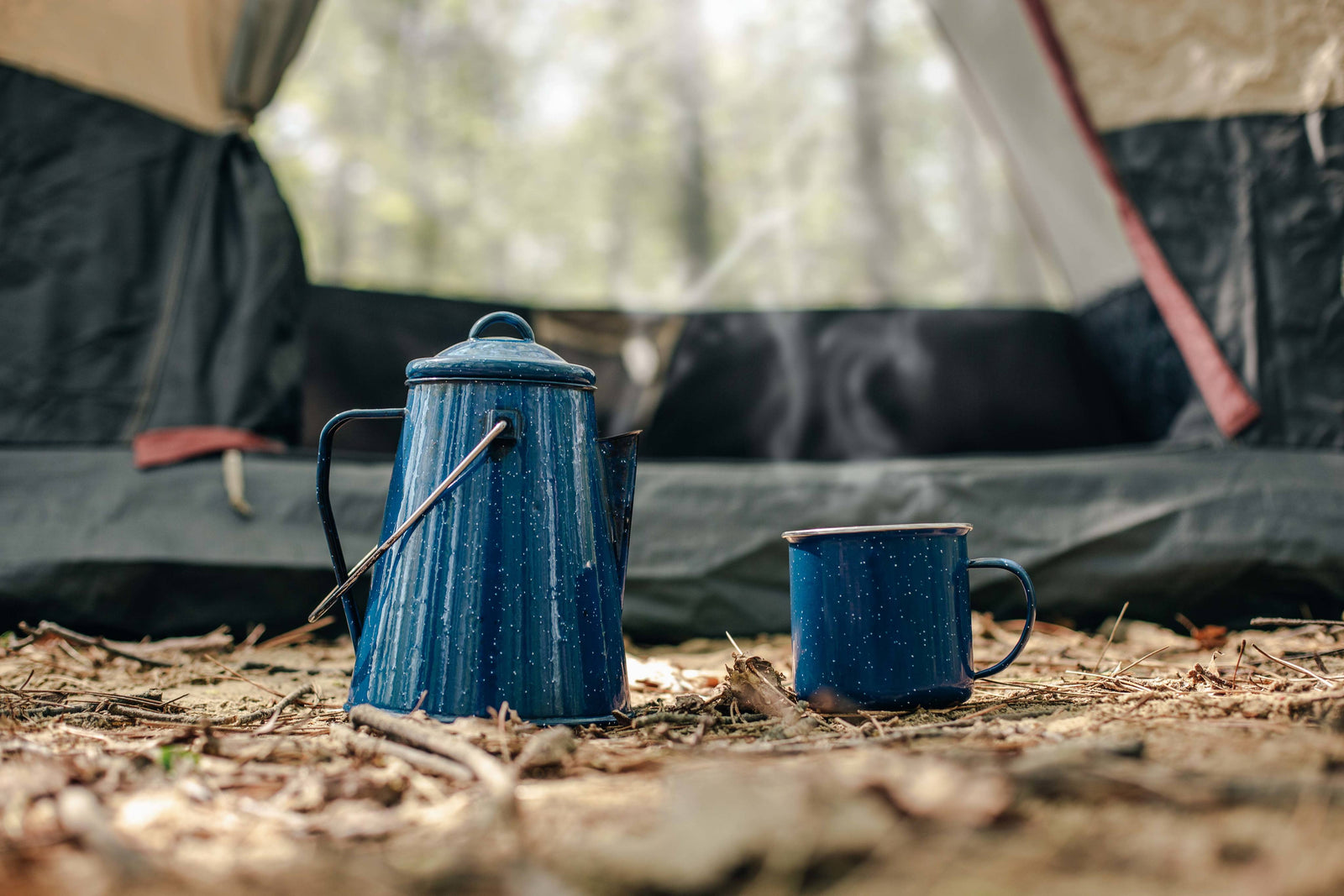
HOW TO CARE FOR A MINOR BURN
Burn treatment depends on the type of burn. For minor burns, treatment is focused on cooling the skin and then treating it with products that promote healing, prevent infection, and relieve pain.3
Here are some tips to start you on the healing process:
COOL THE BURN
by holding the burned area under cool, not cold, running water or apply a cool, wet cloth until the pain eases.3
ALLOW FOR SWELLING
by gently removing rings or other tight items quickly from the burned area. Inflammation is a natural response to injury.3,4
PROTECT ANY BLISTERS
as they are the natural way your body helps protect against infection. If a blister breaks, clean the area with water and a mild soap. Then gently apply an antibiotic ointment or use Dermoplast® First Aid Spray to protect the area from getting infected. Use products as directed.3
SOOTHE THE SKIN
after the burn cools down. Apply a lotion that contains aloe vera or a moisturizer to help prevent it from drying out. You can also apply Dermoplast First Aid Spray or Dermoplast Pain, Burn & Itch Spray for fast, cooling relief. Use as directed.3
COVER THE BURN
with a sterile gauze bandage to keep air off the burn. This will help to protect the skin and reduce pain. Be sure to wrap it loosely to avoid putting pressure on burned skin.1
RELIEVE THE PAIN
by taking an over-the-counter pain reliever during the healing process as they can help reduce the pain and swelling. Use as directed. Another option is applying a Dermoplast spray which offers the maximum OTC strength of Benzocaine to numb the pain, providing comforting relief of minor burns. Use as directed.3
Please see a doctor if you have a more serious burn such as one that covers a large area of the body, is deep, has been caused by chemicals or electricity or is a burn in your airway that causes you to have any difficulty breathing.1
